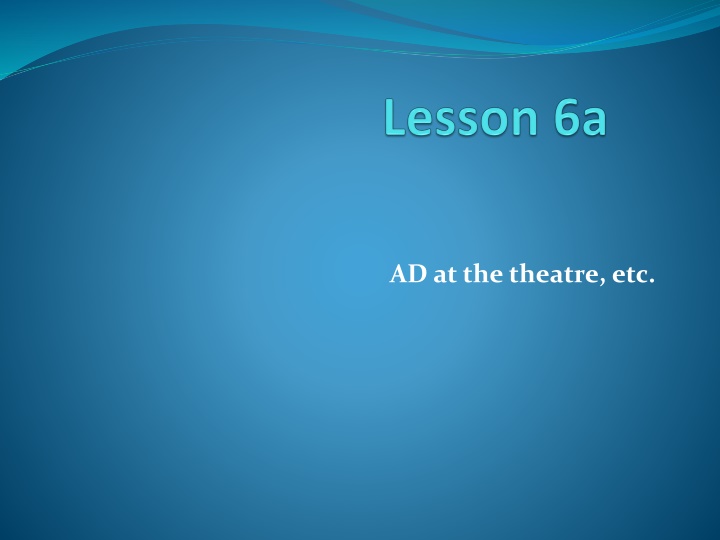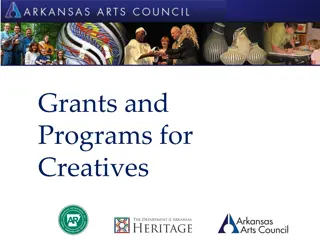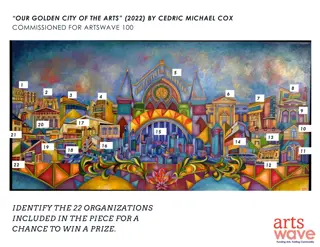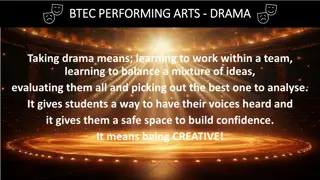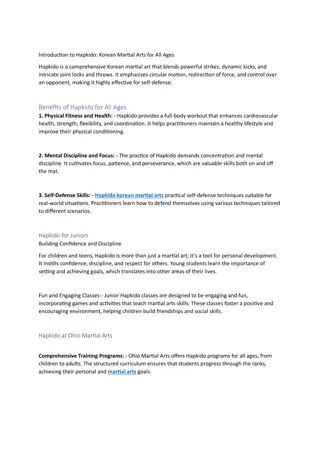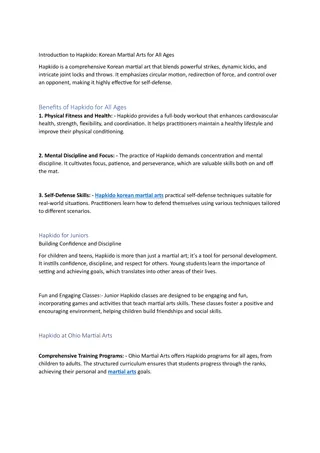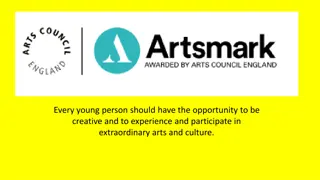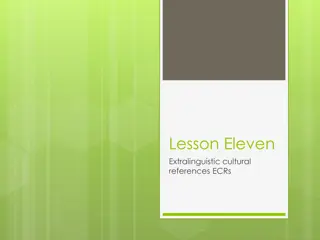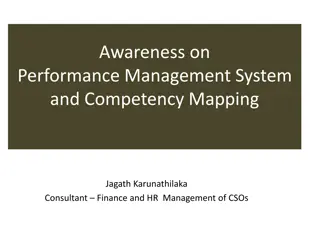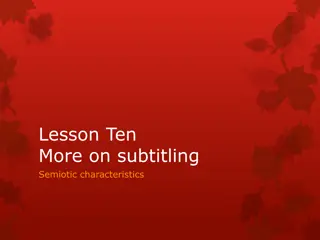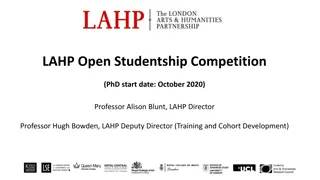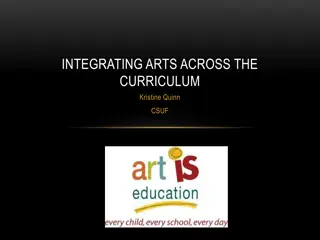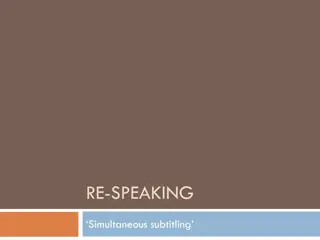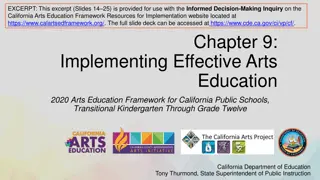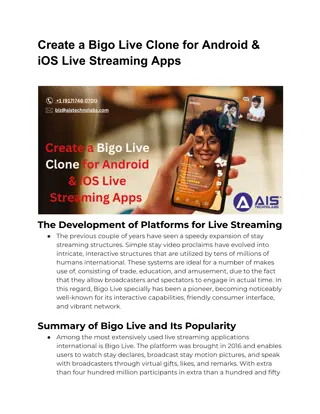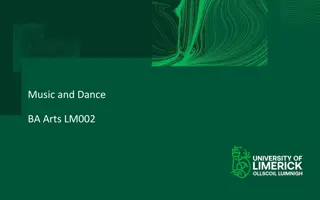Live Subtitling & Audiodescription in Performance Arts
"Exploring the practices of live subtitling and audiodescription in the performing arts world. Discover the nuances of these semiotic transfers from speech to writing and visual to verbal. Uncover the cost-effectiveness and competences required for respeaking. Delve into the similarities with interpreting and the crucial role of audio description. Learn how these techniques enhance accessibility for diverse audiences."
Download Presentation

Please find below an Image/Link to download the presentation.
The content on the website is provided AS IS for your information and personal use only. It may not be sold, licensed, or shared on other websites without obtaining consent from the author.If you encounter any issues during the download, it is possible that the publisher has removed the file from their server.
You are allowed to download the files provided on this website for personal or commercial use, subject to the condition that they are used lawfully. All files are the property of their respective owners.
The content on the website is provided AS IS for your information and personal use only. It may not be sold, licensed, or shared on other websites without obtaining consent from the author.
E N D
Presentation Transcript
Other AVT fields Live subtitling Live audio description More difficult to pin down.
Live Subtitling (Respeaking) & Live Audiodescription Both of these practices can be performed both intralinguallyand interlinguallyand therefore, in the first instance, the term translation must be qualified as constituting a semiotic transfer, in one case from the speech mode to writing and in the second case from the visual to the verbal.
1 2 3 4 Oratore iniziale TP Software TI(2) Sottotitoli TA Respeaker TI(1) Fig. 10.1 Il processo di respeaking
The product Here lies the difference. The slightdelay in delivery is similar to thatof interpreting but the product is written, therefore diasemiotic.
Cost effectiveness Respeaking is much cheaper than stenography.
Similarities In the case of football matches, news, etc. it is often the case that the respeaker is notgiven sufficient time to prepare or prime the software. This aspect must be familiar to interpreters! As are the work conditions: usuallywork in pairs in soundproof booths. Although now theycan work from home or in different locations.
Competences (Eugeni) Phoneticcompetence clear pronunciation of every word, to assist the software. Syntheticcompetence avoid subordination and loquacity. Psycho-cognitive competence ability to manage cognitive load and control the flow of his/hervoice
Audio Description the visual madeverbal (Snyder) In effect this has alwaysexisted whenever someone has explained what is happening toa blind person, in any context (interpreting the visual verbally)
Live Audio Description, eg. theatre Differs from film AD: theatrical techniques; live! sometimes pre-prepared; often combined with audio introductions; tight time constraints (a play is nothing if not dialogue pace Harold Pinter); improvisation, unannounced changes; (Reviers, 2015)
Audio Introduction Short (10-15 minutes) credits description of set (furniture, doors, etc.) physical characteristics of actors roles, costumes props helpful information from programme (as for sighted audience)
Pre-preparation Previews (see the play a few times) Help in script writing (whileattending rehearsals (rare) Sometimes 2 decribers working shifts like interpreters. Or onedescribes the performance and the other the does the audio introductionor interval talk.
Theatre performances minimal set representing everything; explicitand implicit meaning; relies on audience complicity more than film, etc. Hence the describer needs to interpret , not words in a foreign language, but meanings in virtual reality. Don t use theatre jargon eg. John exits stage right . Say John leaves the room . Obviously don t talk over dialogue BUT eg. Mary talks incessantly while pulling a gun from a drawer.
Use of light, sounds ,etc. Often stage scenery, props, etc. need explicitation. Hence the utility at timesof audio introductions. Otherwiseconveying representational artefacts to a blind audience requires interpretation smokeon stage representing the foggy heath in Macbeth; birdsong and orange spotlight representing dawn Be careful with timing around sound effects eg Harry shoots - BANG
delay it is safer to describe actions after they have happened remembering the possibilityof unannounced changes.
From the describers mouth (Udo & Fels, 2009) I gota betterunderstanding of how to write things very shortly
A current example Royal Court Theatre, London X Saturday Matinee with audio description
X This play (by Alistair MacDowell) centres around the crew of a spaceship losing all contact with earth so that they no longer remember how long they ve been away.
The AD Twodescribers forActs 1 & 2 I have with me the script annotated with my draft AD on my ipad & the introductory notes that my co-describer & I prepared ... we read them live (Fryer, p.c.)
Touch Tour How useful is this for the blind audience? For example, there s a moment in the play where there is a series of blackouts. After each, the main character is revealed in a new position, at one stage on the floor with a large creature beside her. From the context it appears to be a dead bird but it looks a bit like a fish. We only see it for an instant before the next blackout. On the touch tour it s revealed to be a giant polystyrene thrush, which has lights projected on it giving the appearance of feathers and movement .
AD Introduction 10 minutes, prepared beforehand byviewing dvd. BUT in the theatre the view is much clearer than on the DVD we ve been working from to prepare our draft AD, so it s clear we will have to make some changes .
For example one character has a tattoo; one character glares at another after a particular exchange it is important to know that a digital clock on the wall is malfunctioning. It s not possible to read the time on the DVD etc. ... requiring some spur of the moment interpreting skills . Interpreting the visual in real time
The End If the preparation is good, If the introduction is helpful, If the sound system works properly, And if the describers can use their interpreting skills toobviatechanges, errors, perspectives, etc., then we deliver the AD, breathe a sigh of relief and go home .
Opera Twodescribers: One describes One reads the surtitles (has precedence) The text is always the same so you can work from the libretto or dvds. Attend rehearsals.
Difficulties in describing Opera goers want to hear the arias, so keep surtitle decription to a minimum. The arias often repeat lines, which the description doesn t. In duets twosingers sing at the same time. Knowledge of the genre isvery important.
Opera goers Aficionados need the option of switching off. Get the pronunciation of names right. Newcomers need a fullerdescription and a pre-show introduction (as for sighted patrons).
